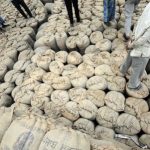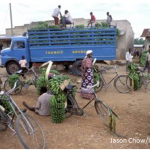Global overweight and obesity rates have almost tripled since 1975 and are expected to continue rising over the next few decades (Shekar & Popkin, 2020). This trend is alarmingly steeper in low- and middle-income countries (LMICs) compared to high-income countries, where the same rates are gradually declining (Ng et al., 2014, Shekar and Popkin, 2020)
NEW PUBLICATION: Food Policies and Obesity in Low- and Middle-Income Countries
Understanding the public health implications of food policies is crucial to combat recently increasing overweight and obesity rates in many low-and-middle income countries (LMICs). This study examines the implication of food policies, mainly tariff rates on “unhealthy” foods (sugar and confectionery products as well as fats and oils) and governments’ subsidies, on individuals’ body weight outcomes
Making the Most of Intra-African Trade
With the COVID-19 pandemic disrupting livelihoods, and the new African Continental Free Trade Area (AfCFTA) now beginning to influence food flows, agricultural trade in Africa is in a state of flux, with both challenges and opportunities. While AfCFTA implementation has begun, some crucial negotiations remain to be completed, and the full scope of its impact is not yet clear.
NEW PUBLICATION: 2021 Africa Agriculture Trade Monitor
The 2021 Africa Agriculture Trade Monitor (AATM) analyzes continental and regional trends in African agricultural trade flows and policies.
NEW PUBLICATION: A 2019 Nexus Social Accounting Matrix for Egypt
The Central Agency for Public Mobilization and Statistics (CAPMAS) is pleased to present an updated social accounting matrix (SAM) for Egypt. This SAM combines information from national datasets from many institutions, including the Central Bank, the Ministries of Finance and Agriculture, and various statistical bureaus
- 1
- 2
- 3
- 4
- Next Page »





